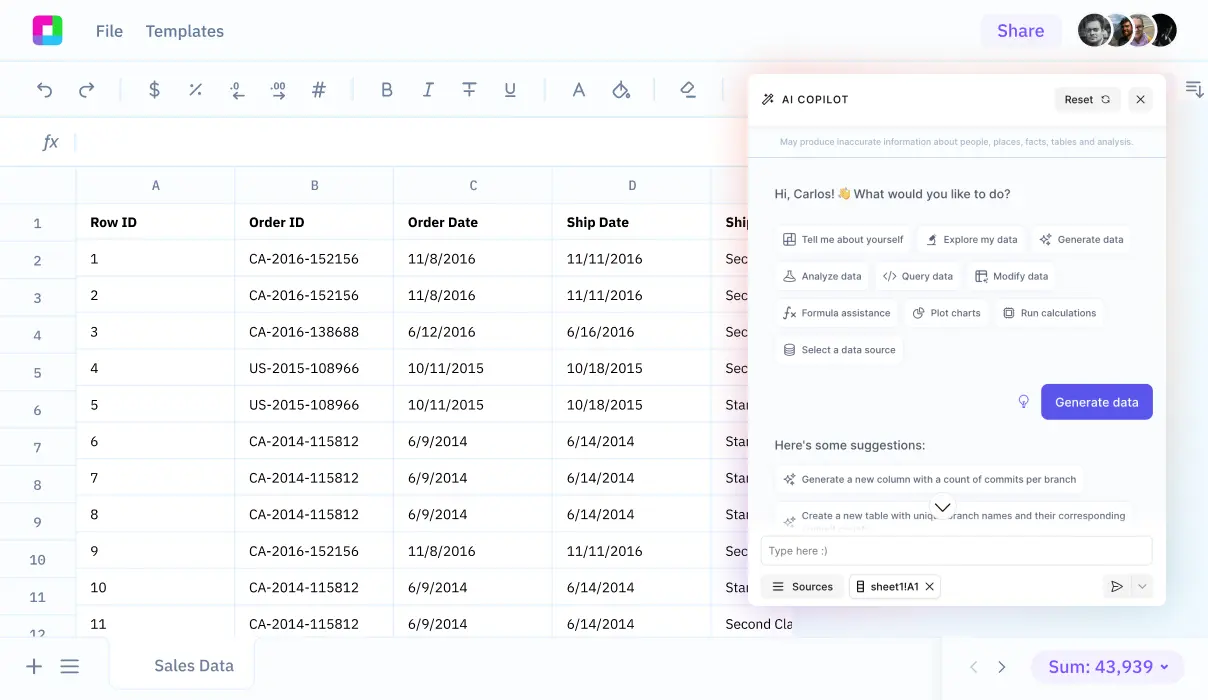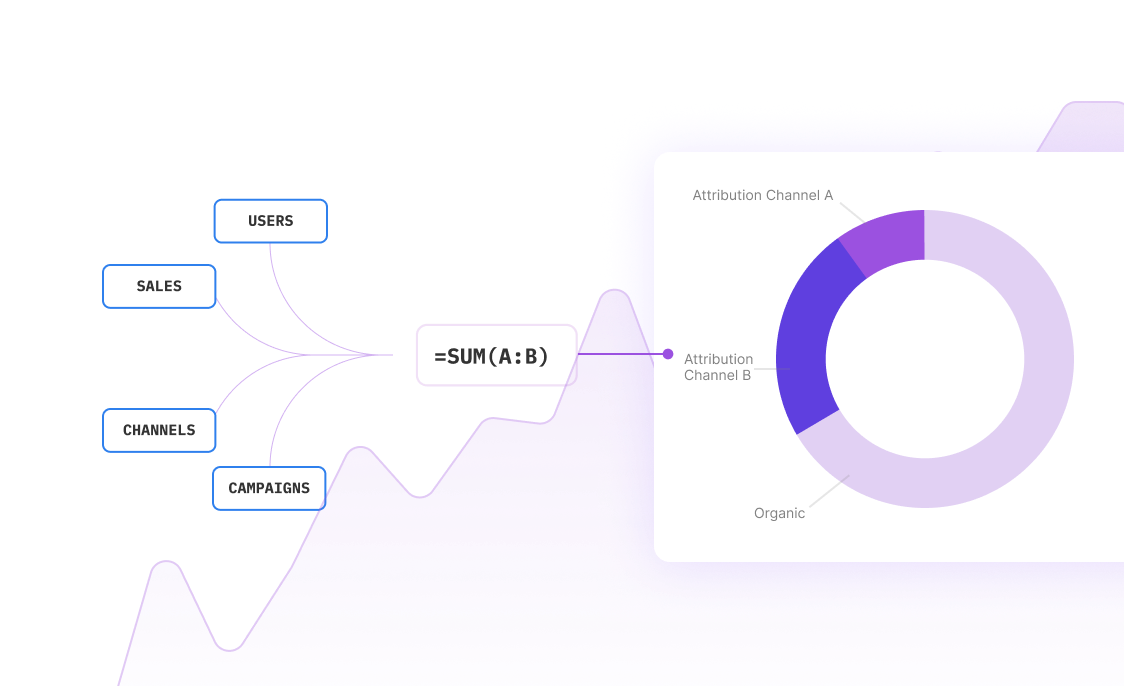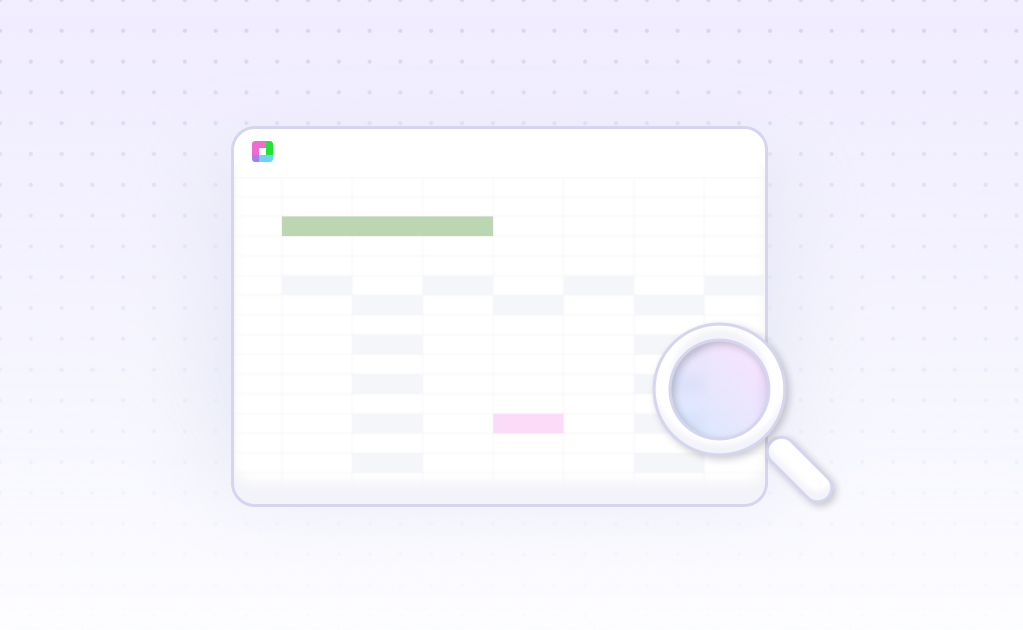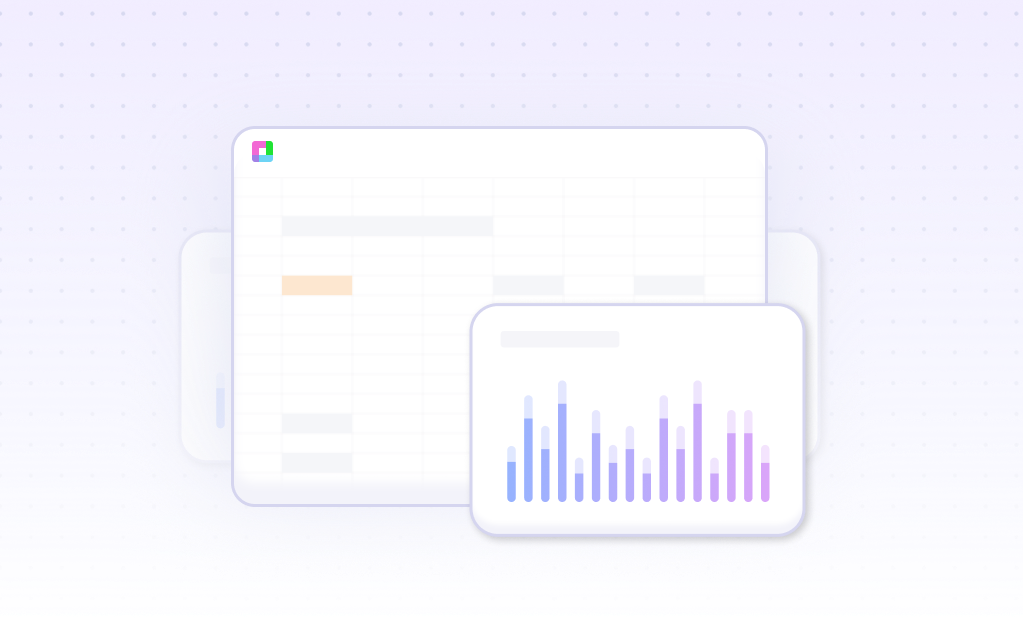
Introduction
Financial liquidity analysis assesses a company's ability to meet short-term obligations. Traditional analysis uses Excel to calculate key metrics like the current ratio, quick ratio, and cash ratio. While Excel remains effective, Sourcetable offers an AI-powered alternative that automates spreadsheet tasks with intelligent formulas and insights.
Sourcetable combines Excel functionality with AI capabilities, automating formula generation, data cleaning, and chart creation. The platform integrates with SQL and Python for advanced analysis, making complex liquidity calculations accessible to users without extensive Excel expertise. Learn how to perform financial liquidity analysis with Sourcetable at sourcetable.com/signup.
Why Sourcetable Is Superior for Financial Liquidity Analysis
Sourcetable leverages forward-looking cash flow metrics and robust scenario analysis to deliver superior financial liquidity analysis compared to traditional Excel spreadsheets. While Excel was revolutionary for finance when introduced, it has become obsolete for modern liquidity management needs.
Advanced Liquidity Management Features
Sourcetable's forward-looking measures help financial managers identify alternative cash flow sources and reduce cash flow strain during market stress. Its comprehensive scenario analysis enables funding managers to prepare for various liquidity situations effectively.
Excel's Limitations
Excel's traditional spreadsheet approach requires alternative solutions for sophisticated business analysis. Modern financial management has evolved beyond Excel's capabilities, particularly for complex liability and off-balance-sheet funding analysis.
Modern Liquidity Analysis Tools
Sourcetable's improved contingency funding planning tools help banks understand and respond to rapidly changing liquidity conditions. This forward-looking approach represents a significant advancement over simplistic ratio-based measurements common in Excel.
Benefits of Financial Liquidity Analysis with AI-Powered Spreadsheets
Why Liquidity Analysis Matters
Financial liquidity analysis provides critical insights into a company's ability to meet short-term obligations. Liquidity ratios offer an easy-to-understand snapshot of financial stability and resilience, enabling stakeholders to make informed decisions. These metrics facilitate meaningful comparisons across companies and industries while alerting stakeholders to potential liquidity issues.
Advantages of AI-Powered Analysis with Sourcetable
Sourcetable enhances liquidity analysis through automated data processing and advanced pattern recognition. The platform handles large datasets efficiently while generating insights that would be difficult to obtain manually. Its natural language interface accelerates traditional Excel workflows for creating visualizations, reports, and financial models.
Sourcetable vs Traditional Excel Analysis
While both Sourcetable and Excel offer essential features like audit trails, calculators, and charting capabilities, Sourcetable's AI capabilities provide additional advantages. The platform automatically categorizes expenses, fills missing data, and generates predictive models based on historical trends. These automated features, combined with multi-user collaboration, streamline the liquidity analysis process.
Financial Liquidity Analysis Examples with Sourcetable
Sourcetable offers comprehensive liquidity analysis capabilities through its free AI-powered spreadsheet platform. Users can calculate key metrics including Working Capital Ratio, Current Ratio, Quick Ratio, and Acid-Test Ratio to assess short-term financial health.
Working Capital Management Ratios
The platform enables detailed analysis of accounts receivable through the Accounts Receivable Turnover Ratio and Days Sales Outstanding (DSO). Inventory management can be tracked via the Inventory Turnover Ratio, while cash flow efficiency is measured through the Cash Conversion Cycle CCC = DSO + DIO - DPO.
AI-Enhanced Analysis Features
Sourcetable's AI capabilities power scenario analysis, financial forecasting, budgeting, and trend analysis. The platform streamlines FP&A processes and automates repetitive calculations while maintaining audit trails and enabling multi-user collaboration.
Debt and Leverage Analysis
Users can assess debt management through the Times Interest Earned Ratio and Debt-Equity Ratio calculations. These metrics provide insights into long-term solvency and financial leverage positioning.
Sourcetable Financial Liquidity Analysis Use Cases
Stress Scenario Planning |
Integrate historical data and real-time market information to model low-probability stress scenarios. Analyze both bank-specific and systemic events to balance liquidity and earnings through automated reporting and customizable workflows. |
Cash Flow Forecasting |
Leverage AI-powered forecasting to predict daily, weekly, and monthly cash flow fluctuations. Generate real-time insights using automated data processing and Excel integration for improved short-term liquidity planning. |
Risk Assessment and Monitoring |
Track financial health indicators through automated dashboards. Monitor capital levels, assess covenant compliance, and evaluate collateral requirements using real-time collaboration capabilities. |
Contingency Funding Analysis |
Model alternative funding strategies and assess backup funding sources. Analyze the impact of potential funding line reductions, increased collateral requirements, and market access limitations through automated scenario analysis. |
Securitization Planning |
Evaluate liquidity challenges associated with securitization activities. Create contingency funding plans for market access disruptions using AI-driven insights and automated reporting processes. |
Frequently Asked Questions
What is financial liquidity analysis and why is it important?
Financial liquidity analysis measures a company's ability to convert assets into cash quickly and pay short-term obligations like vendor payments, payroll, and operations expenses. It's important because it shows whether a business can meet its immediate financial commitments and provides a margin of safety in its cash flows.
What are the main ratios used in liquidity analysis?
The main liquidity ratios are the current ratio, quick ratio (also called acid-test ratio), and operating cash flow ratio. The current ratio compares all current assets to current liabilities, while the quick ratio excludes inventory to focus on assets that can be quickly converted to cash.
How can I perform liquidity analysis in Sourcetable?
Sourcetable allows you to perform liquidity analysis using integrated variance charts to compare current figures against past performance or forecasts. You can use IBCS-compliant visuals to present the ratios clearly, while the AI-powered features automate calculations, reduce errors, and process data from multiple sources for comprehensive analysis.
Conclusion
Financial liquidity analysis traditionally requires Excel expertise to calculate ratios like the current ratio, quick ratio, and cash ratio. These ratios assess a company's ability to meet short-term obligations using various levels of current assets.
Sourcetable offers an AI-powered alternative to manual Excel calculations. It automatically generates formulas like SUM and VLOOKUP, creates charts, and provides advanced data analysis through SQL and Python integration. With Sourcetable, financial analysts can perform liquidity analysis without extensive spreadsheet knowledge. Try Sourcetable's AI-powered financial analysis capabilities at sourcetable.com/signup.
Recommended Analysis Guides
Connect your most-used data sources and tools to Sourcetable for seamless analysis.
Frequently Asked Questions
If you question is not covered here, you can contact our team.
Contact Us





